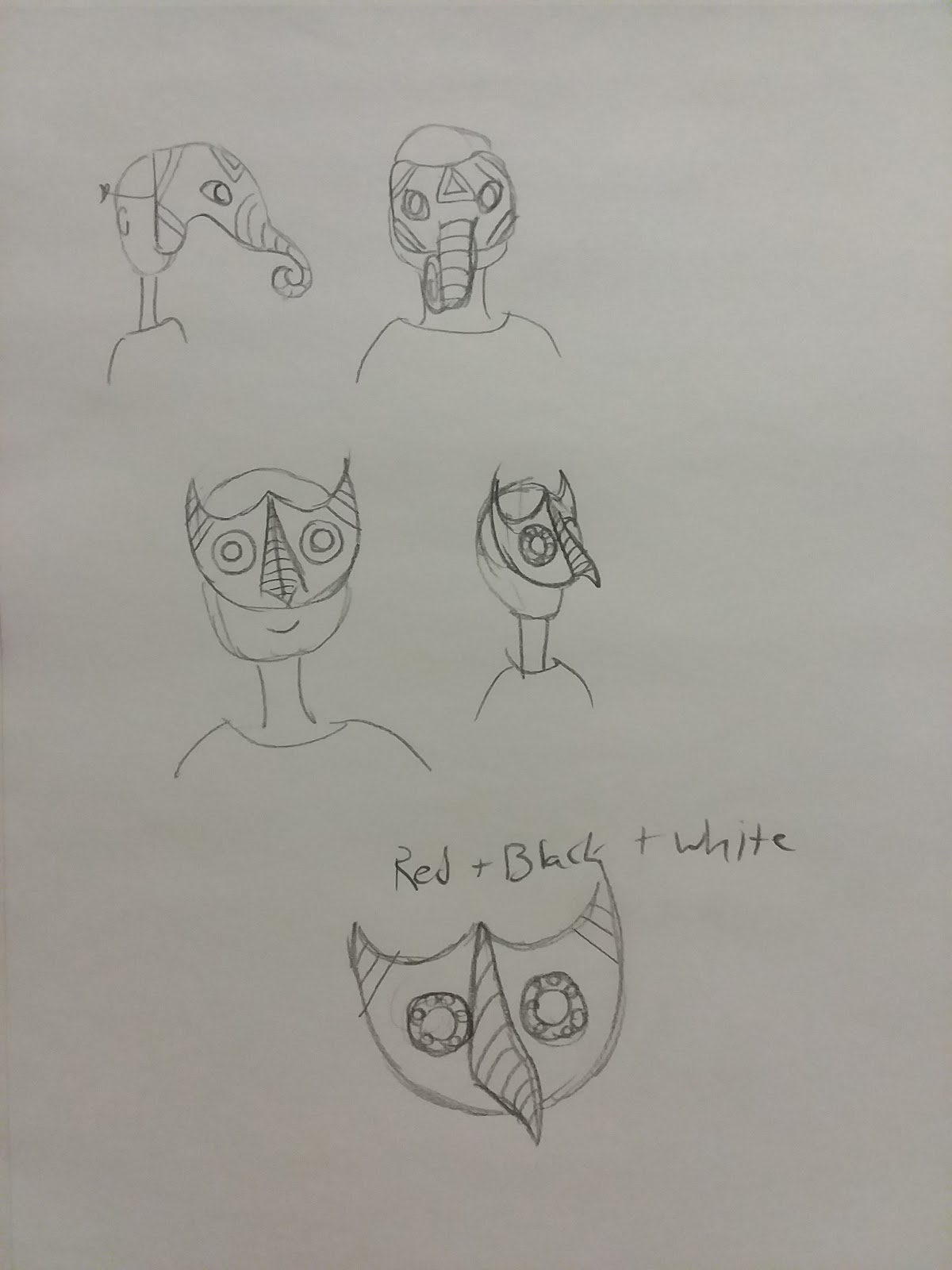Mask Making: Module 10
Inspiration Masks:
This mask is from the indigenous peoples of the Pacific Northwest. The piece has a strong use of line, guiding the viewer along the large sloped of the front of the figure. The simple shapes are outlined and highlighted by using a combination of black, white, and red. These colors all bring out vibrancy in one another. The expression of the mask appears to be happy and possibly playful. The large nose and front of the mask are very bird-like in appearance.
Payaso from the mountains of Ecuador
This mask is that of a clown from the Native peoples of Ecuador. The mask has a strong sense of color, with a bright demonstration of the primary colors on a white surface. The exaggerated features play with the idea of the human form in an interesting way, distorting the face into an overly silly version of a man. The simple shapes and colors are very striking, but also evoke a childlike innosence.
The masks on these costumed “fools” are particularly striking. They also are comprised of a simple, yet effective color pallet of red, white, and black. The human face is simplified into basic lines and shapes. This effect is particularly similar to the way that children may draw a human face, with overly exaggerated primary features. These masks are non-threatening and celebratory.
Designing my mask:
I wanted my mask to be a simple mask because when I work in ceramics I am drawn to simple, yet effective shapes and designs for functional pieces. I chose to work with the motif of an owl because I like owls, there are alot that live in the woods by my childhood home and I grew up loving to watch them and other birds. I used simple lined and shapes to emphasize the eyes, beaks, and ears of the owl. The color pallet I chose was meant to bring out the simplicity of the shapes and refine them a little. I like my mask and I enjoyed making it.

Comments
Post a Comment